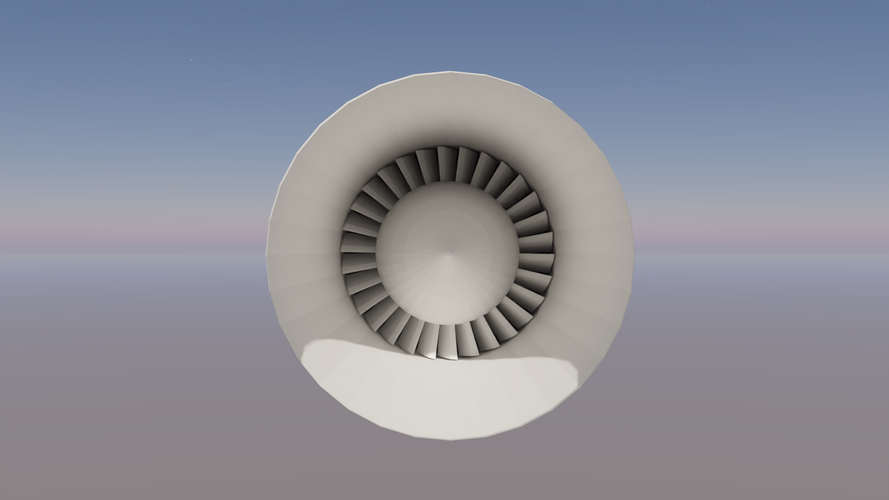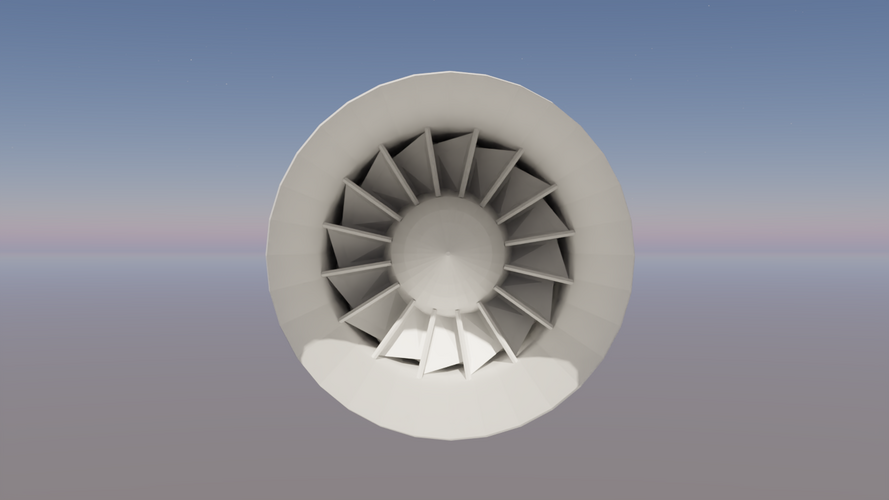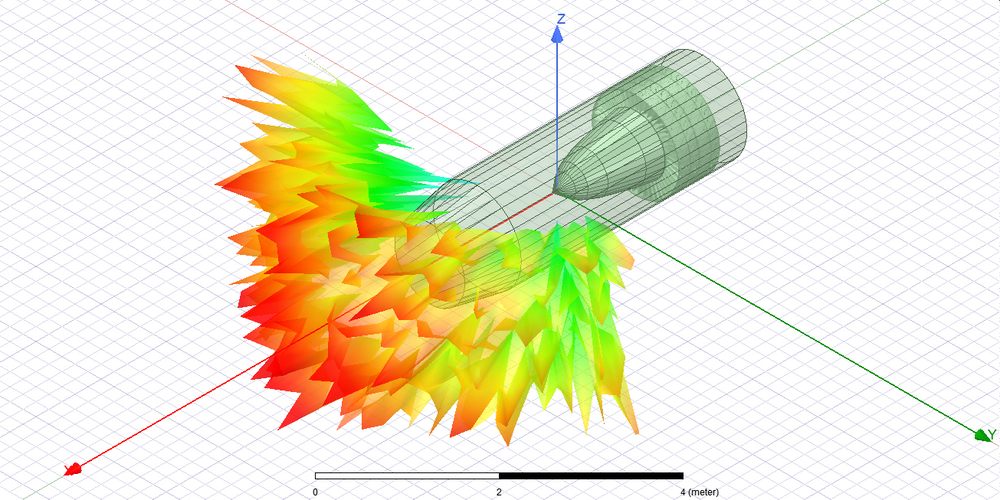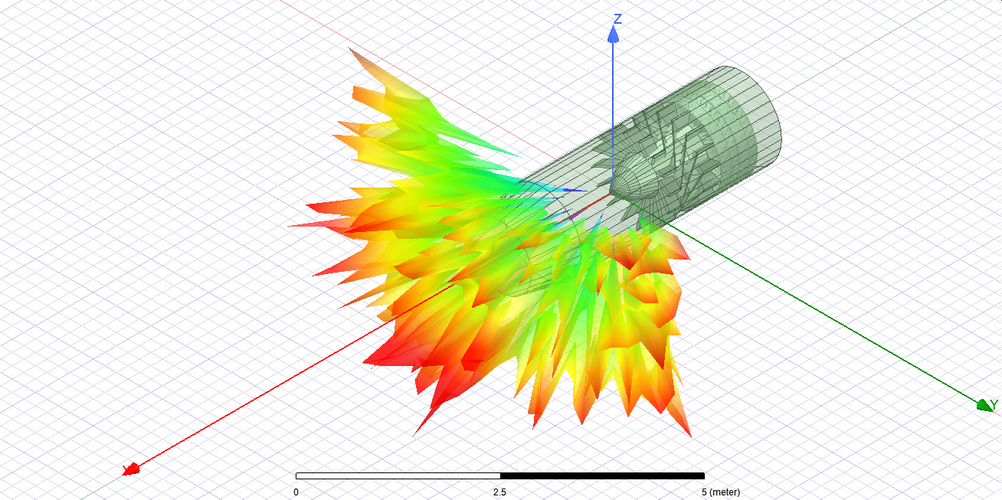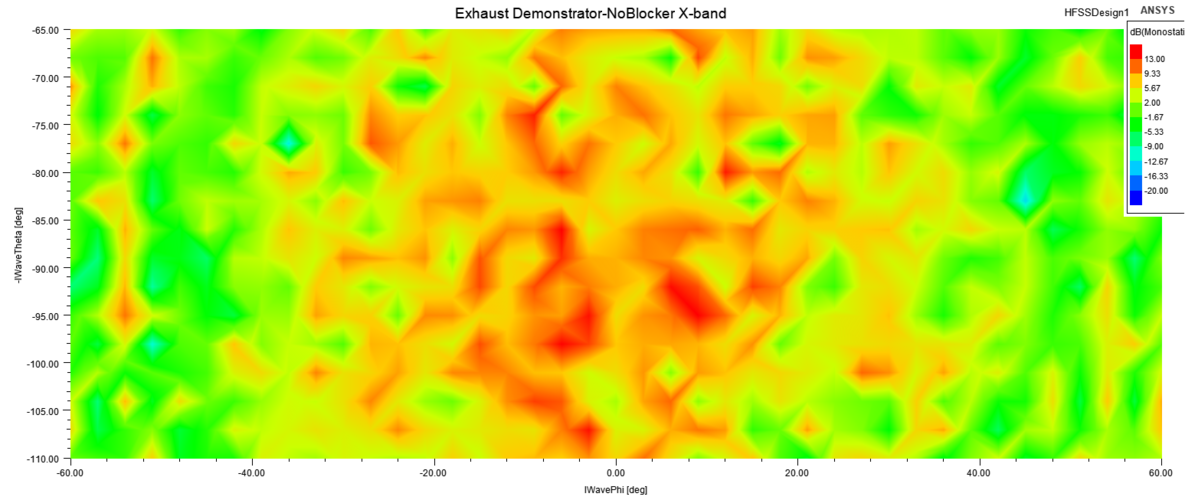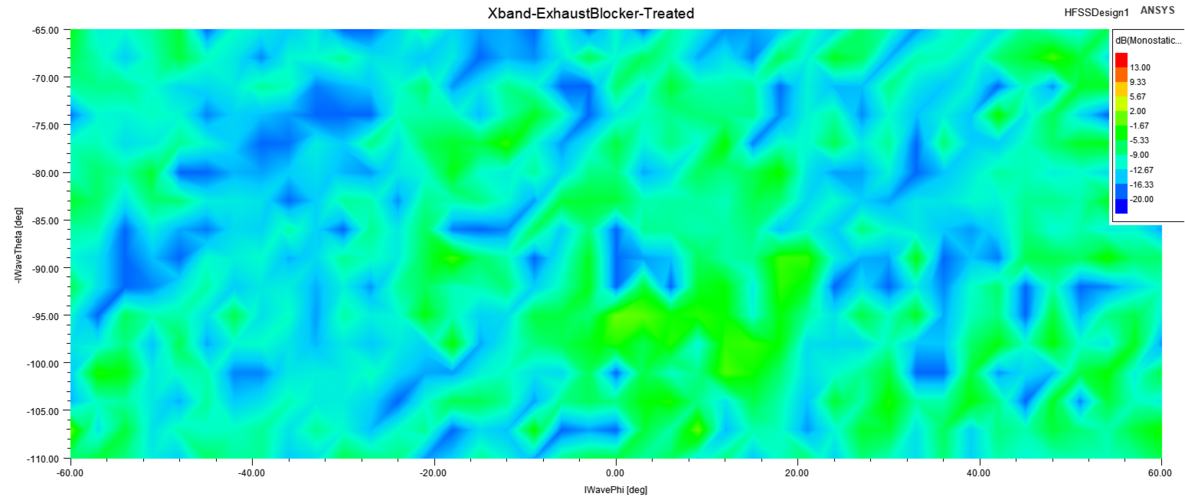- Joined
- 11 February 2010
- Messages
- 1,636
- Reaction score
- 2,639
One interesting characteristics of F-22, particularly the F-119 engine which carried over to F-135 is the "stealthy augmentor" which designed in specific shape to block view from the turbine blades. Aside from few short articles and photos. I'm curious if there is anything else released in public domain, we have patents on radar blockers and good images of its shapes but. This stealthy augmentor seems not as many.
As for what kind of effect it can have on RCS. I made a bit of speculation. Regarding the possible shape of the stealthy augmenter.
So i modeled a simple nozzle and jetpipe along with "bullet" and 2 stages of turbines.

The exhaust blocker in view based on F-22 Augmenter. This is very speculative as i only have image from Jay Miller's book. This may work in Radar cross section reduction wise but whether this can work aerodynamically. i have no means to test it yet. I in fact dont even know what people expect aerodynamically from such device.

Material wise. The augmenter is treated with "Perfect RAM" to basically emulate the "Best expected value achievable" The "bullet" also treated similarly. The turbines and engine casing are left as PEC.
The result :
The 3D plot however does not reveal much except apparently slight reduction in spikes. The 2D contour plot of the engine however reveals considerable amount of reduction, as can be seen in the 3rd plot of the table aobove. the "nasty" powerful red spikes from the untreated turbines are gone when the treated blocker are present.
The overall strength of the RCS Median wise also considerable reduced. The simulation is done in X-band (8 GHz), and in similar manner as one i did for Su-57 radar blocker. The Median value of the RCS are as follows :
Untreated nozzle without blocker : 1.8 Sqm or 2.57 dB
Nozzle and jetpipe with blocker : 0.052 Sqm or about -12 dB
Correspond to about 34 Times reduction. Using the value for the radar detection range this correspond to about 60% reduction in detection range for possible hostile radar. Sounds VERY promising. Further reduction can be achieved if one also treat the wall of the jetpipe. I tried that approach too but the result seems to be greatly unrealistic as i am using ideal absorber.
So yeah, What do you guys think ?.
As for what kind of effect it can have on RCS. I made a bit of speculation. Regarding the possible shape of the stealthy augmenter.
So i modeled a simple nozzle and jetpipe along with "bullet" and 2 stages of turbines.
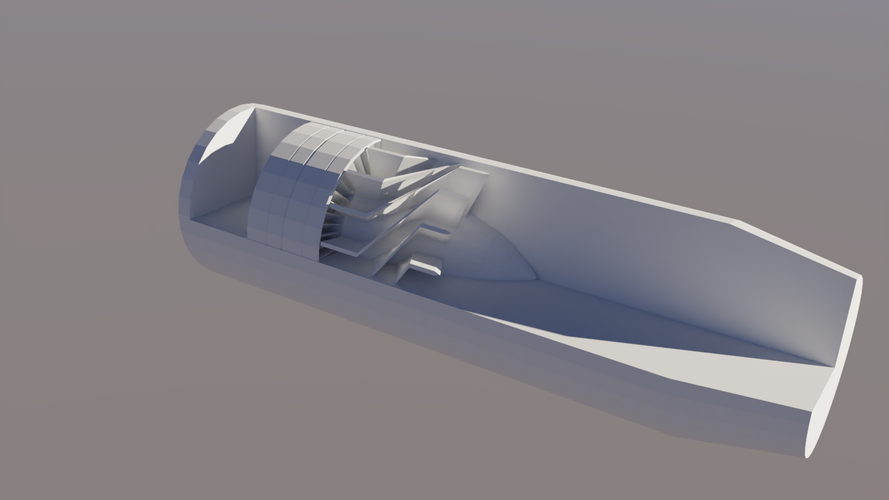
The exhaust blocker in view based on F-22 Augmenter. This is very speculative as i only have image from Jay Miller's book. This may work in Radar cross section reduction wise but whether this can work aerodynamically. i have no means to test it yet. I in fact dont even know what people expect aerodynamically from such device.
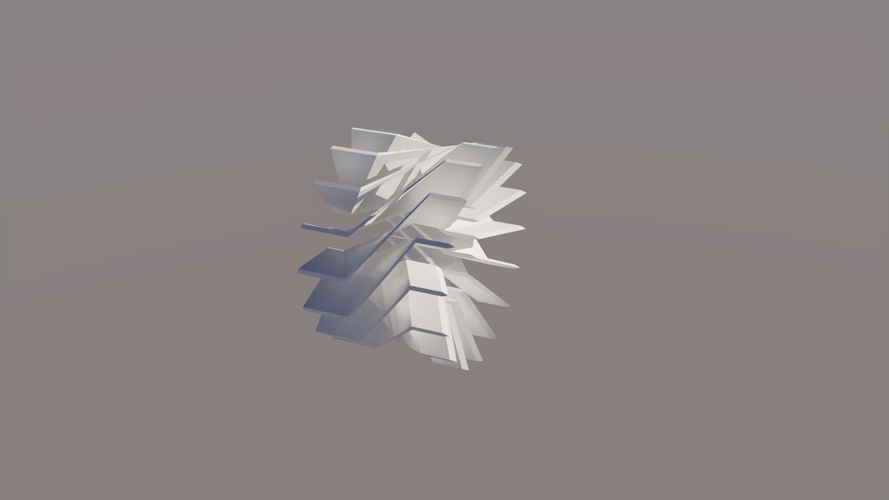
Material wise. The augmenter is treated with "Perfect RAM" to basically emulate the "Best expected value achievable" The "bullet" also treated similarly. The turbines and engine casing are left as PEC.
The result :
The 3D plot however does not reveal much except apparently slight reduction in spikes. The 2D contour plot of the engine however reveals considerable amount of reduction, as can be seen in the 3rd plot of the table aobove. the "nasty" powerful red spikes from the untreated turbines are gone when the treated blocker are present.
The overall strength of the RCS Median wise also considerable reduced. The simulation is done in X-band (8 GHz), and in similar manner as one i did for Su-57 radar blocker. The Median value of the RCS are as follows :
Untreated nozzle without blocker : 1.8 Sqm or 2.57 dB
Nozzle and jetpipe with blocker : 0.052 Sqm or about -12 dB
Correspond to about 34 Times reduction. Using the value for the radar detection range this correspond to about 60% reduction in detection range for possible hostile radar. Sounds VERY promising. Further reduction can be achieved if one also treat the wall of the jetpipe. I tried that approach too but the result seems to be greatly unrealistic as i am using ideal absorber.
So yeah, What do you guys think ?.

